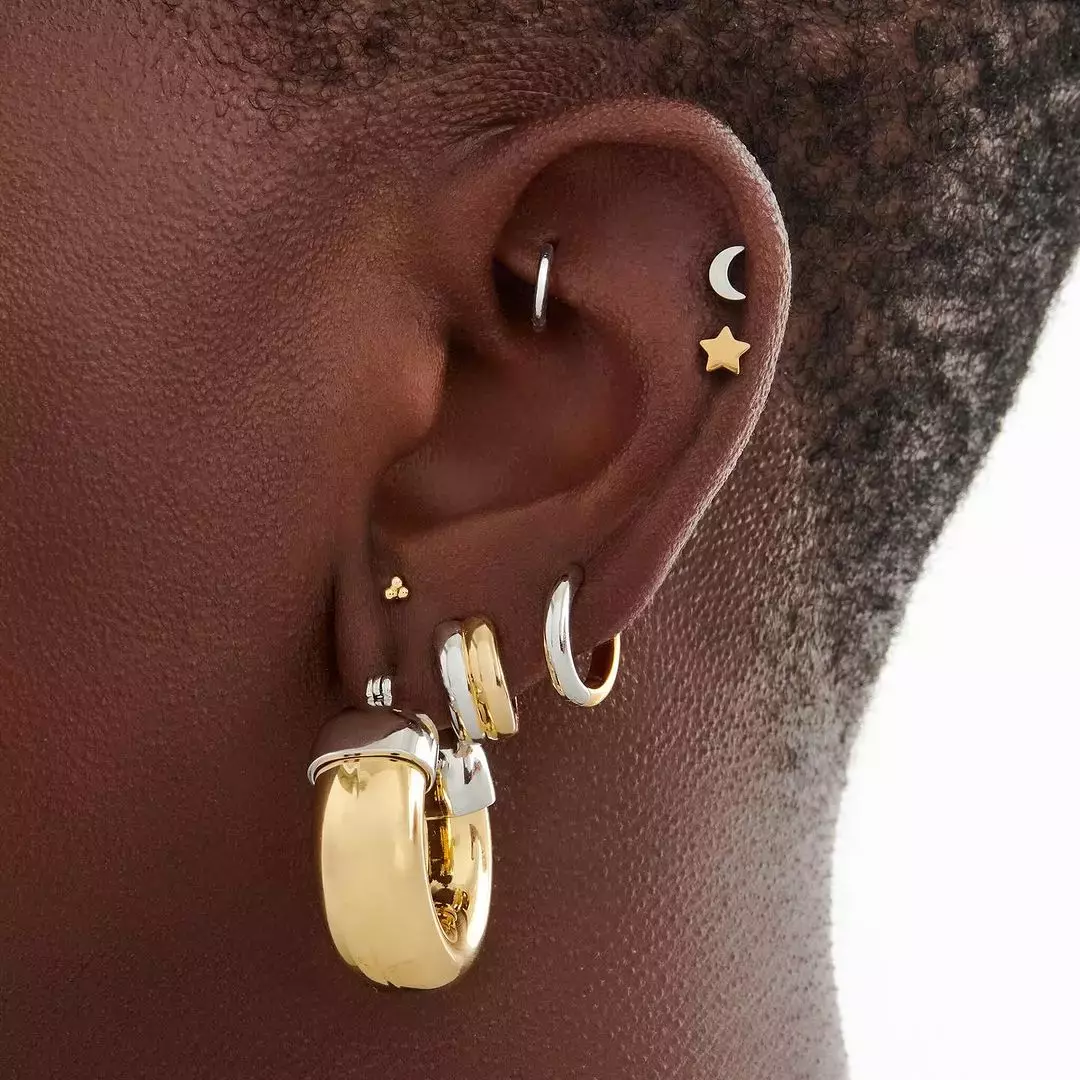
Scrolling through social media, it’s hard not to be mesmerized by all the beautifully styled ears adorned with unique earrings. From hoops to studs and more daring placements like daith or tragus, ear piercings offer endless possibilities. Lately, there’s been a particular spotlight on helix piercings—those trendy upper cartilage piercings that make a statement all on their own.
Helix piercings are incredibly versatile, giving you the freedom to experiment with various styles. But before rushing to your favorite piercing studio, it’s important to understand the basics of the process, the proper care needed, and the potential risks involved. Ready to explore the world of helix piercings? Let’s break down everything you need to know, along with some inspiring styles for your next piercing session!
What Is a Helix Piercing?
A helix piercing is a placement along the upper ear cartilage, providing plenty of room for creativity. Piercing professionals generally identify four main styles: classic, midi, flat, and forward-facing. However, there are many other variations for those seeking something extra special. Styles like the vertical helix, faux rook, or contra conch are also options, catering to individuals with unique ear shapes that may not suit the traditional placements.
Is Getting a Helix Piercing Painful?
Pain tolerance varies from person to person, so the level of discomfort during a helix piercing can differ. Some describe it as more intense than standard lobe piercings because it goes through thicker cartilage. The experience is usually quick, and the sensation fades within seconds. However, if you’re planning on getting multiple piercings in one session, be prepared; the discomfort tends to increase slightly with each additional piercing.
While the actual piercing process might not be too bad, the healing phase can be more challenging. One of the trickiest parts? Trying not to sleep on that side for several months! Applying pressure on the piercing too soon can lead to irritation, swelling, and extended healing time, so it’s essential to practice patience.
How Long Does a Helix Piercing Take to Heal?
Helix piercings can take three to six months to heal fully, but the duration varies depending on the specific placement and your body’s unique healing process. In some cases, healing may even extend to nine months or more. During this time, proper aftercare is key to avoiding complications.
For optimal healing, always wash your hands before touching the piercing and keep hair away from the area to minimize bacteria exposure. It’s recommended to cleanse the piercing twice a day with a saline solution or a gentle, fragrance-free soap. Your piercer will likely use a longer earring post initially to accommodate any swelling, which they’ll swap for a shorter post after about four weeks. Avoid changing the jewelry yourself until it’s fully healed to prevent infections or other issues.
Since helix piercings involve the ear cartilage, they can be more prone to serious infections. In some rare cases, untreated infections can escalate to more severe conditions. That’s why it’s crucial to monitor for symptoms like persistent redness, swelling, or unusual discharge. If you spot any of these signs, seek medical advice promptly.
Choosing a Safe Location for Your Helix Piercing
Selecting a reputable piercing studio is one of the most important steps to ensure a safe and smooth healing process. Professional associations advise against using piercing guns, as they can cause significant tissue damage. Instead, choose a studio that uses sterile needles and follows stringent hygiene practices. Look for piercers who use high-quality, hypoallergenic materials like gold, implant-grade steel, or titanium, which are less likely to cause allergic reactions or harbor bacteria.
Essential Aftercare for Helix Piercings
Luckily, caring for a helix piercing isn’t overly complicated. Your piercer will guide you through a detailed aftercare routine, but a few standard practices include using a sterile saline solution to cleanse the area twice a day and keeping hair and products away from the piercing to prevent irritation. Avoid sleeping directly on the pierced ear until it’s completely healed, which can take up to nine months.
Helix Piercing Inspiration: Styles to Try
Pierce-Free Cuff
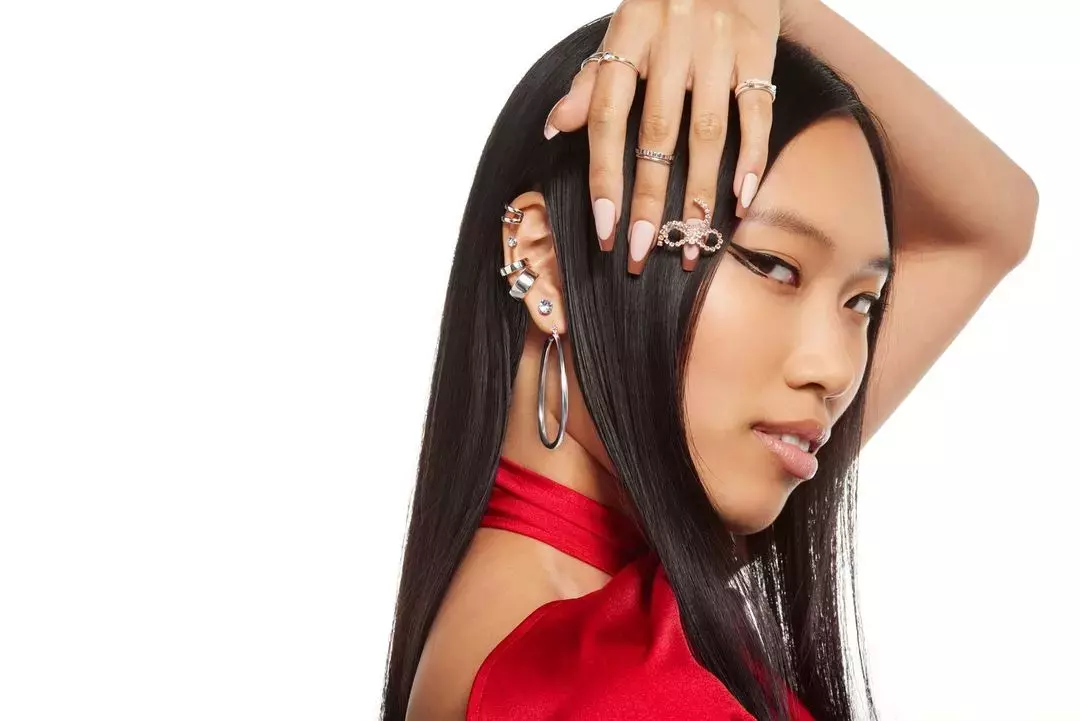
Not ready for a needle? Opt for a pierce-free cuff for a faux helix appearance. This non-committal option is great for testing the waters before deciding on a permanent addition.
Unique Cat Flap
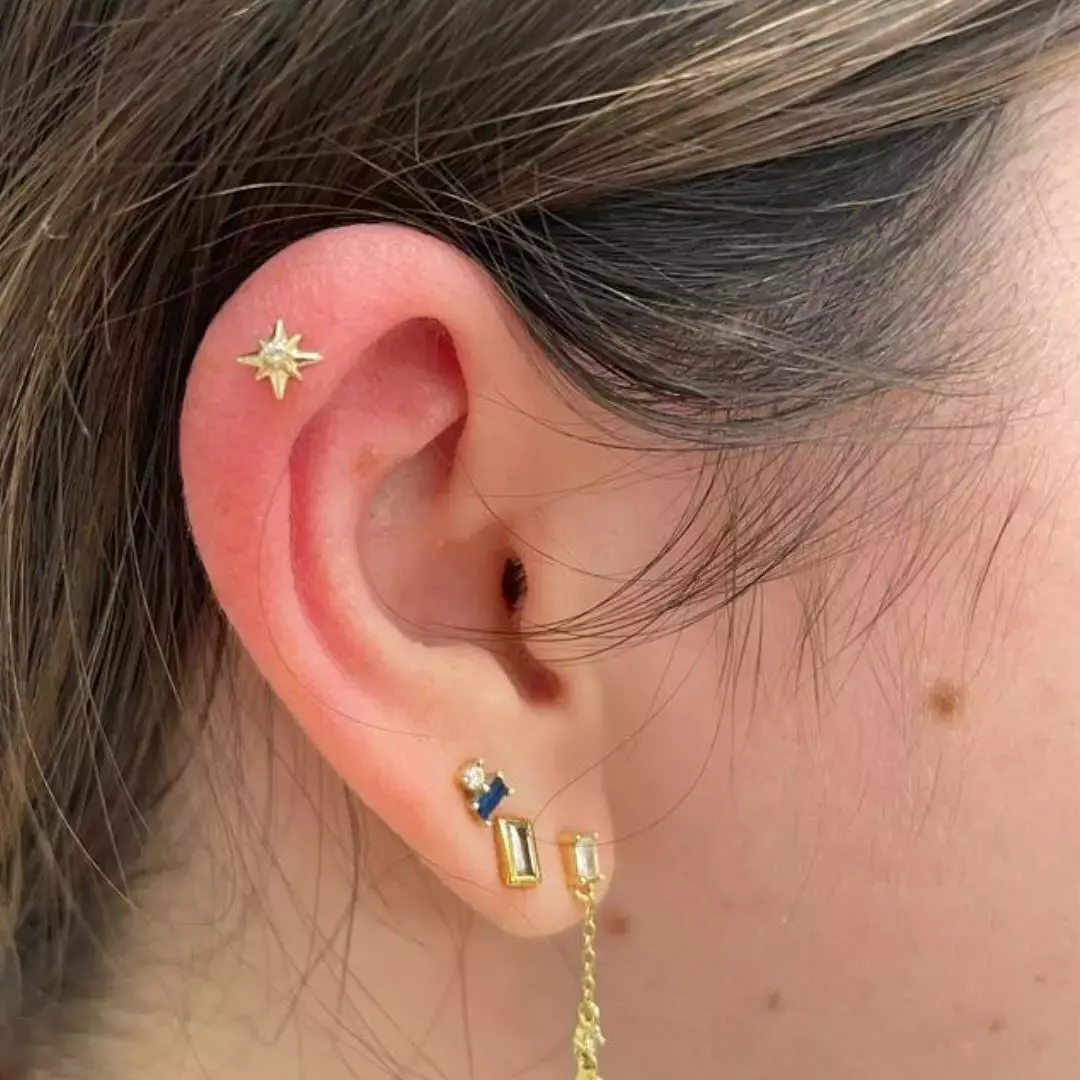
Ideal for those with distinct ear shapes, the “cat flap” style features a vertical helix piercing. It’s a standout option that effortlessly brings a bold, edgy twist to your curated ear stack.
Double Piercing with a Chain

Go bold with two helix piercings connected by a delicate chain. This statement look adds a playful yet chic element, making it a standout choice for those looking to step up their ear styling.
Hoops and Sparkles
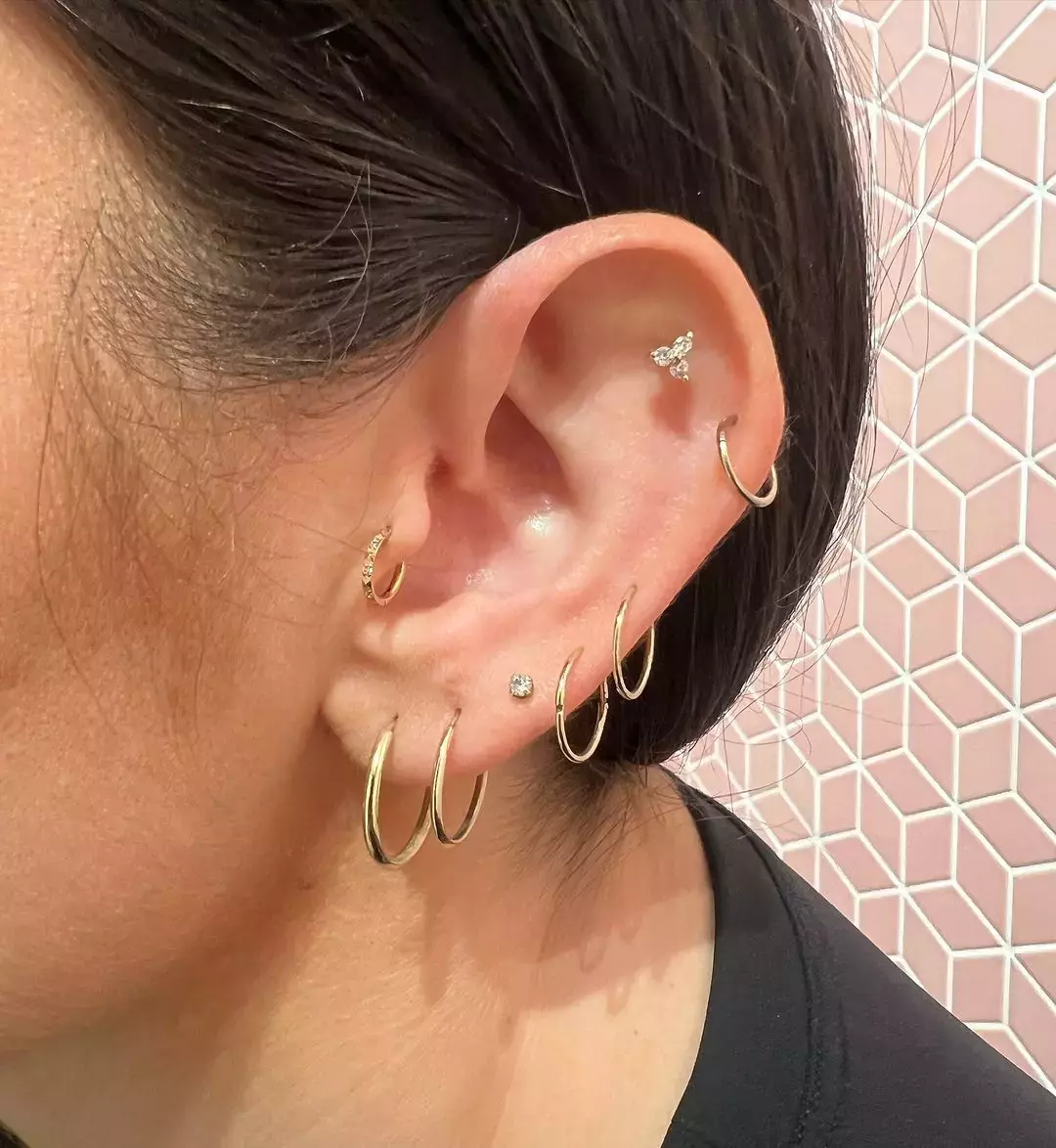
Elevate your ear game with a combination of delicate hoops paired with a small gem. This look adds a touch of sparkle and sophistication, perfect for both casual and glam occasions.
Subtle Stud
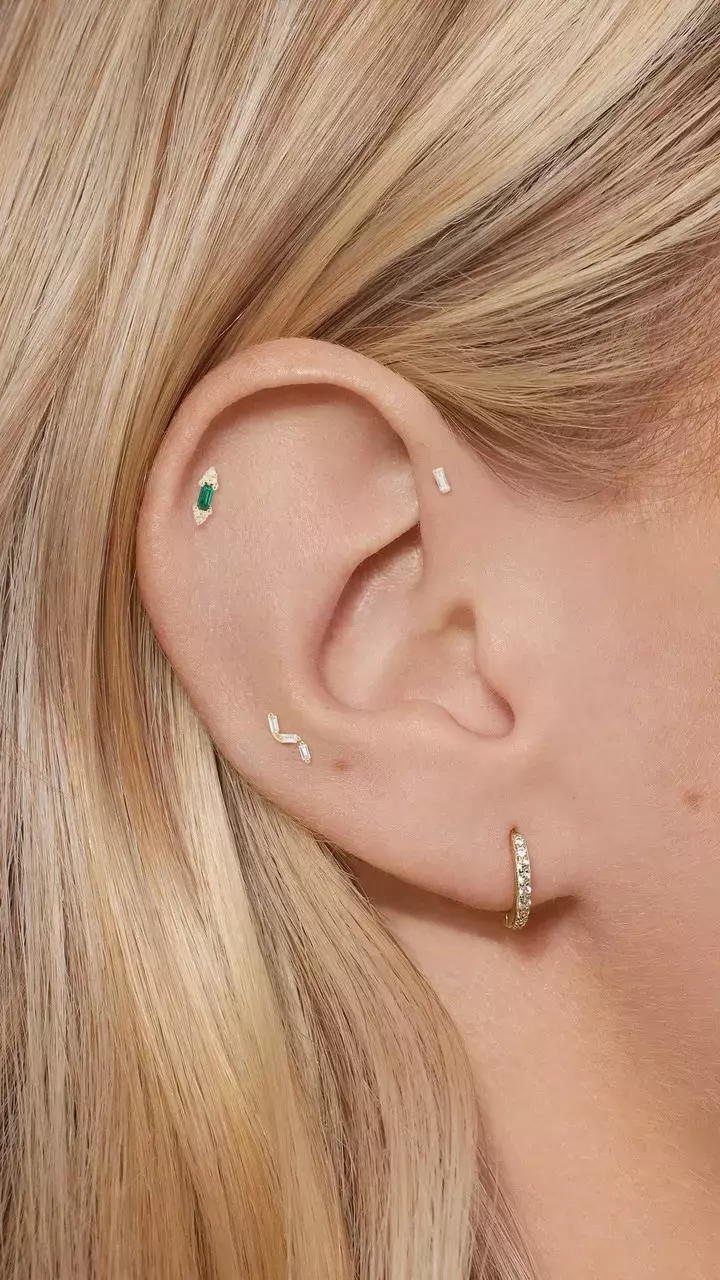
Keep it classic with a single, small stud in the upper cartilage. This subtle placement offers a refined, minimalist vibe that works seamlessly with any outfit, adding a hint of edge without being too bold.
Two-toned trend

Experiment with the two-toned trend by mixing metals like gold and silver. This contrast not only draws attention but also allows you to play with different styles for a modern, versatile ear accessory.
Minimalist Clusters
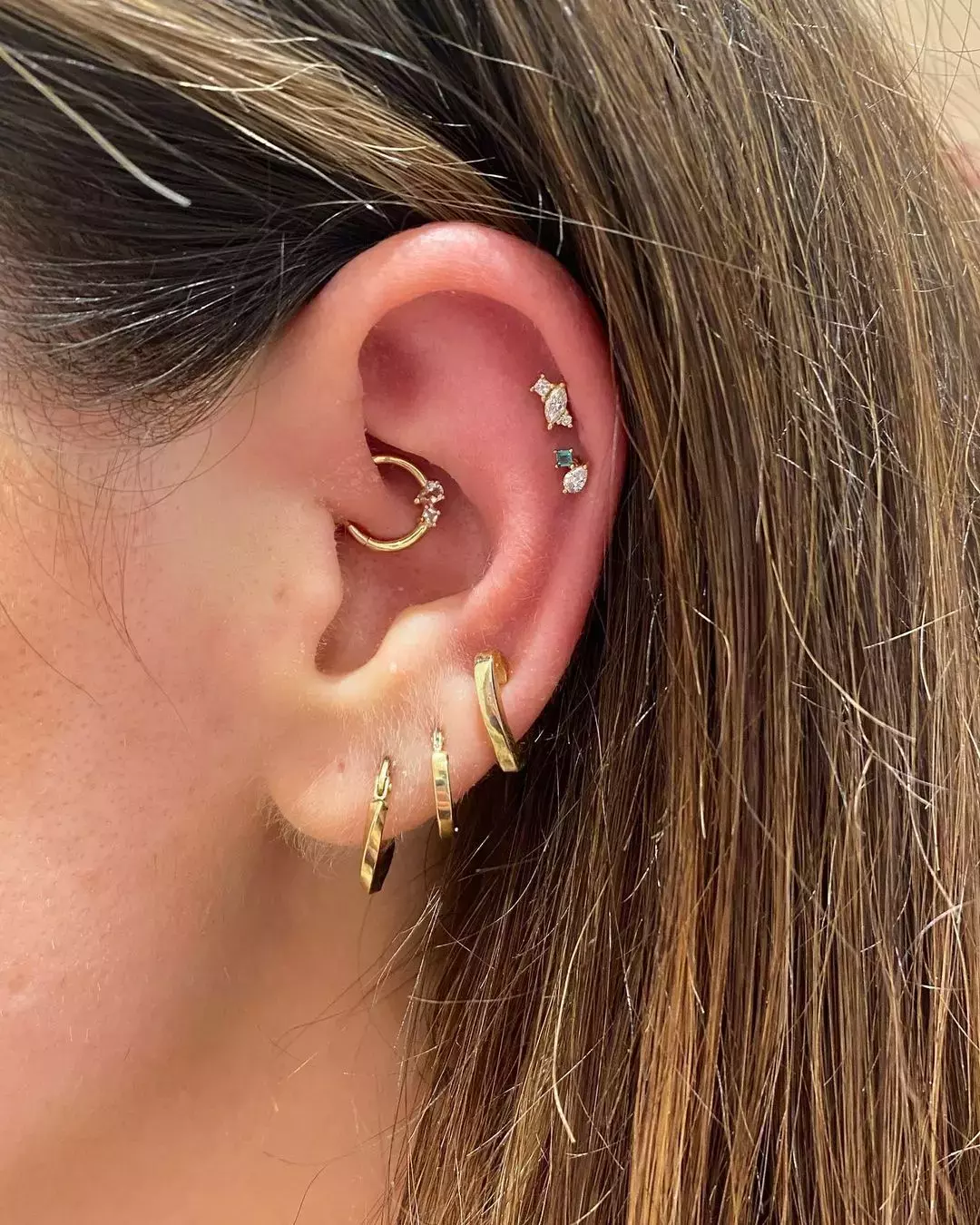
Create an understated yet elegant look by pairing tiny studs in a clustered formation. This minimalist style is perfect for those who love a simple yet stylish ear ensemble without overwhelming their aesthetic.
FAQs
1. When is it safe to change the jewelry in a helix piercing?
You should wait at least six to nine months before changing your helix piercing jewelry. This allows enough time for the piercing to heal properly, reducing the risk of irritation or infection. Always consult your piercer before making any changes.
2. Can I sleep on my new helix piercing?
It’s best to avoid sleeping on the side with the fresh helix piercing. Putting pressure on it during the initial healing period can lead to irritation, swelling, and delayed healing. Try to sleep on your back or the opposite side for the first few months.
3. What materials are best for helix piercing jewelry?
The safest options for helix jewelry include gold, implant-grade steel, and titanium. These materials are hypoallergenic and resistant to bacteria, making them ideal for minimizing the risk of infection and promoting a smooth healing process.



